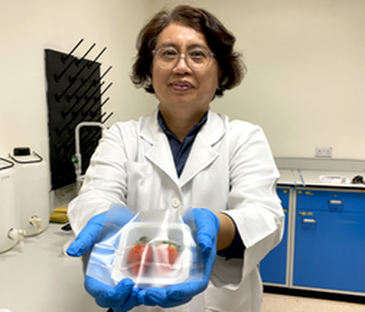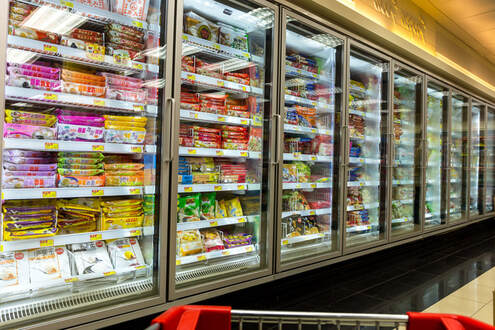If you like are interested in becoming one of our BHC Associates, be sure to check out our Join Our Team page!
April 18, 2022
A New Way of “Smart” and Sustainable Food Packaging
A New Way of “Smart” and Sustainable Food Packaging
Researchers from Nanyang Technological University, Singapore, and Harvard T.H. Chan School of Public Health, came up with a new way of 'smart' food packaging material that is both biodegradable and sustainable. It is made up of corn protein called zein, starch, and other kinds of naturally obtained biopolymers and antimicrobials, keeping out any damaging bacteria to humans. It can also increase the shelf life of fruit products by 2-3 days. These researchers conducted a test that consisted of strawberries and how long they could stay fresh before developing any mold. The strawberries that were in typical plastic fruit packaging stayed fresh for about 4 days, while the ones in the smart food packaging stayed fresh for seven days. This waterproof packaging includes a mesh of nanoscale fibers that were manufactured by “electrospinning and infused with a combination of natural antimicrobial compounds including thyme oil and citric acid. The fibers were programmed to sense the presence of enzymes from bacteria such as E. Coli and Listeria and increased levels of relative humidity on their surface.” In response, antibacterials are released in order to increase food safety.
To learn more about it click here
To learn more about it click here
April 27, 2022
Foods Could Last Longer Thanks To A Biologically-Derived Polymer Packaging
Researchers at Cornell University have come together to help find a solution to make active packaging materials with a biologically-derived polymer that helps salad dressings, marinades and beverages last longer in the fridge. The point of this research is to help lower the amount of preservatives in packaged food while also reducing plastic waste. Joshua Herskovitz, who studied in the laboratory, transferred the “corn-derived polylactic acid polymer with the antioxidant nitrilotriacetic acid to use it in food packaging.” Ian Kay, a doctoral student in food science, followed up on Herskovitz’s findings and found out the material’s “interfacial pKa,” which gives you the information at what pH the foods in the packaging might work in order to keep it from going bad. This research comes after an EPA study reported that during 2018, the US supplied 68.13 tons of food waste and 35.6 million tons of plastic waste.
Read more about it here
Read more about it here
© Copyright Bryan Hauger Consulting, Inc., 2018 - 2022. All rights reserved.

